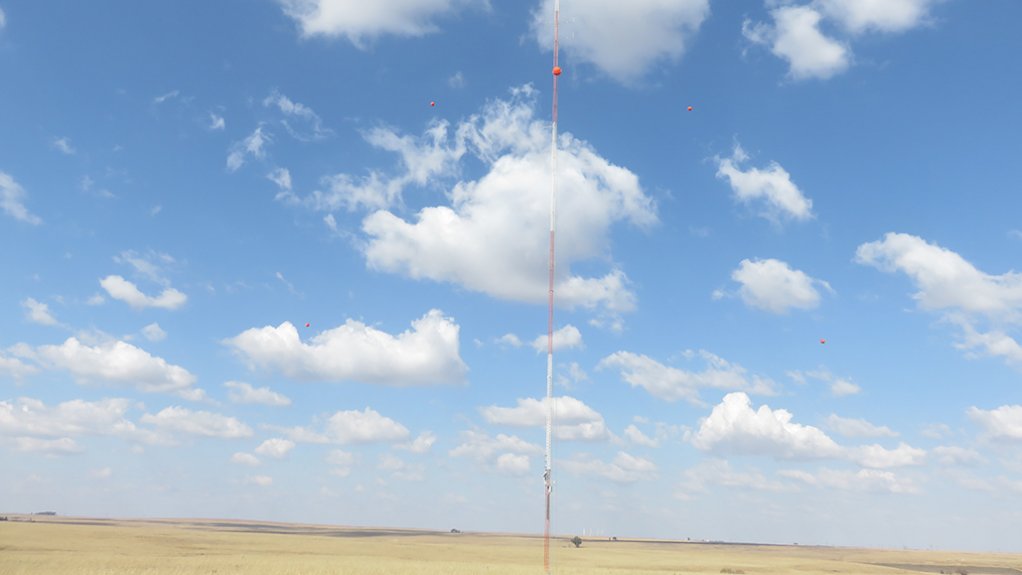Having pioneered the installation of meteorological measurement masts (met masts) at various locations to assess the wind data in Mpumalanga, almost immediately upon setting up offices in South Africa five years ago, renewable-energy company ENERTRAG South Africa’s strategy has been to prove that wind resources in South Africa are economically viable.
The purpose was not to solely retain a foothold in this traditionally thermal-powered region, but to de-risk the province for wind development for all independent power producers (IPPs). As the transformation of the country’s energy system continues to gather momentum, as demonstrated in the draft Energy Action Plan, this type of informed development strategy is proving to be essential.
“Uncertainties and risks related to the wind resource and profile, reduce with each year that a wind measurement campaign is extended. With the first met masts having been installed several years ago, this offers ENERTRAG South Africa the advantage of increased certainty with respect to the actual wind profile at our wind energy facility locations,” explains ENERTRAG senior procurement manager South Africa Ludwig van Aarde.
The data continues to show that, contrary to prior beliefs, there are viable wind resources, he adds.
Therefore, although the average wind speeds are generally lower than in other areas like the Eastern Cape or Western Cape, the results indicate that the Mpumalanga province is economically viable for future renewable energy projects and can play a significant role in the energy transition.
He points out that ENERTRAG South Africa, which has installed met masts across many provinces in the country, uses the international best practice MEASNET standards. Therefore, for simple, flat terrain, an about 10 km radius is measured, whilst for moderately complex terrains like Mpumalanga approximately 4 km to 5 km radius is measured, and for complex terrains about 2 km radius is measured.
“Project development is a long-term process and for the company to be a vanguard in the Mpumalanga province and other regions, we have invested in the necessary research to develop in this region, and others, which has historically been home to thermal energy.
“This is essential if our industry is to continue to add new capacity to the grid, which is constrained in the traditional wind regions. Hence, as with other IPPs, we need to expand our footprint into new areas that offer increasingly scarce grid availability, and the Mpumalanga province is featuring near the top of that list," adds Van Aarde.
Measuring Wind Resources
As recently demonstrated by energy intensive users in and around the eMalahleni area, this region is already becoming a hub for the private off-taker market. This is even more beneficial when the renewable energy sources are in close proximity to the grid that can accept more power generation and allow wheeling – and this scenario is especially true for the Mpumalanga province.
How Met Masts Work:
The met mast is a triangular steel-lattice mast with a height ranging from 100 m to 160 m. The plan view of the mast is triangular with 45 cm edge length.
The mast is fixed with guy wires to three directions.
The met mast is based on a concrete foundation and the guy wires are fixed to the ground using steel anchors.
Measurement equipment is installed on the met mast. This includes anemometers at different heights, aviation lights, lighting rod, temperature/humidity sensor, wind vanes, barometric pressure sensor and a data logger.
Raw wind speed data is also collected by the anemometers while wind direction data is collected from the wind vanes and stored on the data logger. The data is sent by email to a remote service provider, who analyses the data and provides the relevant reports. The end-goal is accurate and consistent data collection for a bankable yearly energy yield assessment.
Edited by: Zandile Mavuso
Creamer Media Senior Deputy Editor: Features
EMAIL THIS ARTICLE SAVE THIS ARTICLE
ARTICLE ENQUIRY
To subscribe email subscriptions@creamermedia.co.za or click here
To advertise email advertising@creamermedia.co.za or click here













